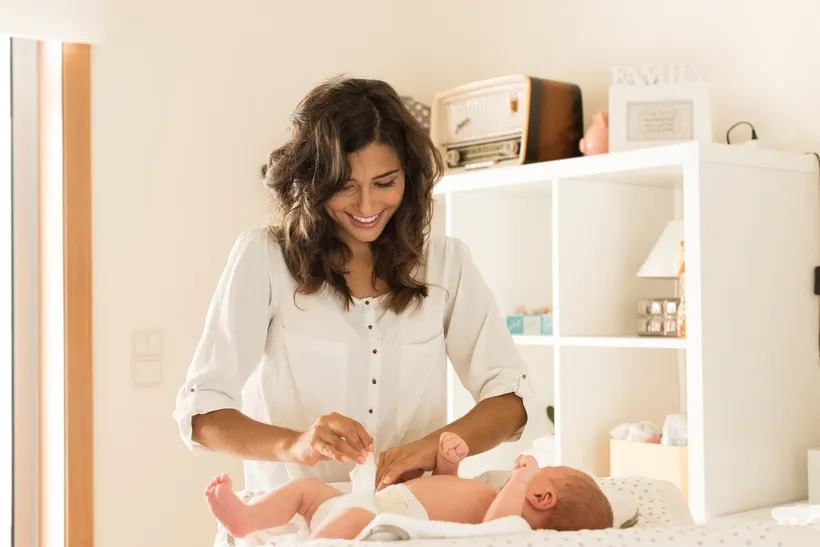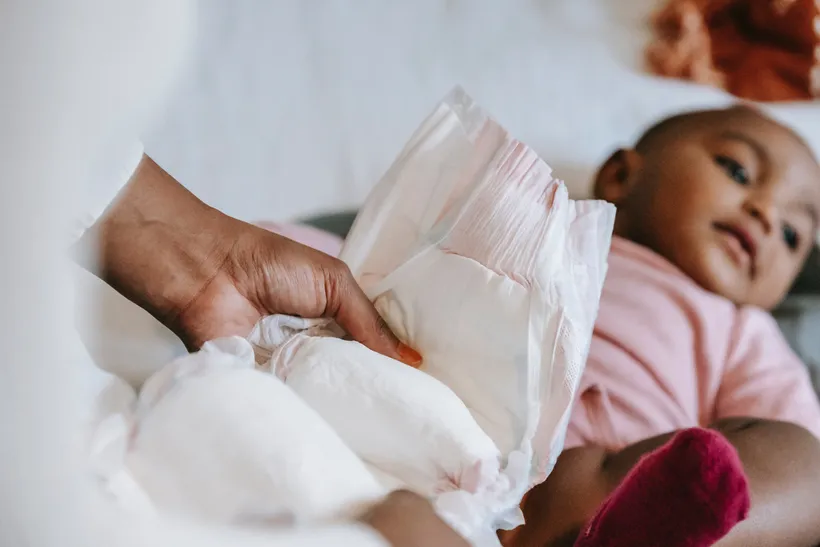When I first brought my baby home from the hospital, I didn’t anticipate diapering being much of a concern. I had changed plenty of diapers in my babysitting years after all. But as it turns out, successfully diapering a newborn and preventing leaks can be a bit of a struggle. For the first couple of months, my partner and I dealt with issues like constant leakage (regardless of the diaper brand or size), how to change our baby at night without waking him up, and making the diaper-changing experience pleasant for everyone involved.

Q: How can I make diaper changing a more enjoyable experience for my baby?
Fortunately, babies don’t tend to put up too much of a fuss during diaper changes when they’re really little. The most important thing to consider is creating a comfortable environment for your little one. This is a great time to give newborns the face-to-face contact they crave as they’re learning about faces and people. Talk to them, sing to them, engage with them… diaper changes can be a very special time for you and your baby in the early months.
A sound machine, a wipe warmer, and some unscented baby lotion can make the environment nice and cozy too. Of course, you’ll need a changing table as a standalone fixture, or one that is mounted on top of a dresser. If you’re sharing a room with your new baby in the early months, you can keep your changing table in your bedroom until you move them to their nursery. This will make those middle-of-the-night changes a little easier!

Q: What are the best organizing hacks to make my diaper changing station more useful?
Whether you’re setting up shop on top of a dresser or using a traditional changing table, keeping things organized will help you avoid extra stress during diaper changes.
“I love using drawer organizers inside of the dresser drawer to organize diapers. That way, the diapers are hidden away but are still easily accessible,” advises Naomi Coe, founder of Little Crown Interiors in Irvine, CA. You can also use a tabletop diaper caddy to organize diapers and creams, which has the advantage of being mobile.
Naomi also advises keeping your changing area clear of anything other than the necessities, both for the purposes of maintaining a nice-looking interior, and for keeping your baby safe. “Babies tend to wiggle and kick when they are on the changing pad, so keeping the surface clear of clutter helps to reduce things getting knocked over,” she says.

Q: How can I avoid diaper leakage?
For the first couple of months of our child’s life, my partner and I could not figure out why we were constantly facing diaper leakage. Here are troubleshooting hacks we learned as we became more experienced parents:
1. Check to make sure the ruffles on your child’s diaper are fanned out. Turns out, this was essentially the root of our issues. The ruffles along the edges of your baby’s diaper are meant to be fanned and fluffed out to catch leaks.
2. When in doubt, size up! Our baby actually sized up from a size 2 diaper to a size 3 long before he entered the weight range for the larger diaper, and had fewer leaks as a result.
3. Change your baby’s diaper every couple of hours at a minimum. The fuller the diaper, the more you risk experiencing leakage. Most diapers have a color-changing strip down the front that will alert you when the diaper is wet.
4. If you have a baby boy, point his penis downward in the diaper, rather than upward. This was communicated to us by the nurses at our hospital, but apparently it’s not exactly common knowledge. Aiming everything downward ensures the diaper can do its job.
Repost:Maggie McCracken
Web:https://weiypaper.com/product-category/baby-diapers/
Web2:https://weiyipaper.en.alibaba.com/?spm=a2700.shop_index.88.5
